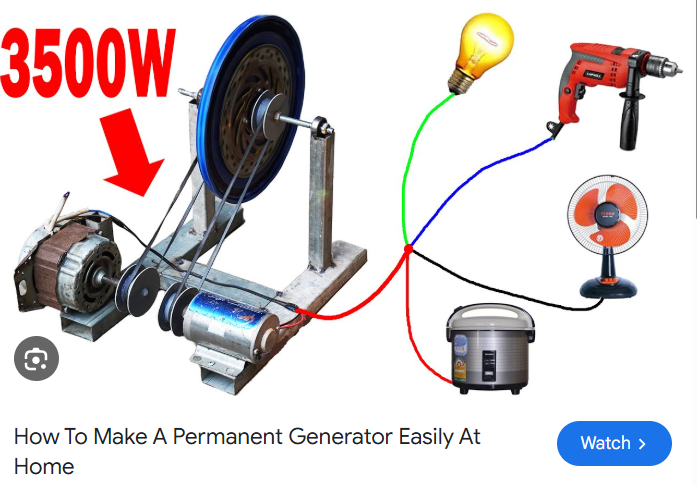Think building a generator is expensive or complicated? Think again. With a few items lying around your home—yes, seriously—you can make a small, working generator that can power small electronics, charge batteries, or light up LEDs. It’s one of the most rewarding DIY projects for beginners looking to get into off-grid living or emergency preparedness.
👉 Want a full step-by-step generator plan that can actually power your home?
Check out the Ultimate Off-Grid Generator Plan – simple, affordable, and beginner-friendly.
🧰 Materials You May Already Have at Home
Surprisingly, many generator components are things you’ve already thrown in your junk drawer or garage.
Common Household Items That Can Be Used:
- Small DC Motor (from old toys, appliances, or printers)
- Wires (speaker wire, old charger cables, extension cords)
- Magnets (from speakers or fridge magnets)
- LEDs (from holiday lights or old circuits)
- Cardboard or plastic containers (to mount components)
- Old phone charger (to create a USB charging port)
⚙️ How a Basic Homemade Generator Works
A generator is essentially a device that turns mechanical energy into electrical energy. When you rotate a coil of wire within a magnetic field, or vice versa, you generate electricity.
In this build, you’ll:
- Use a DC motor as the core generator
- Manually rotate it using a crank or motor
- Use magnets to enhance power output
- Store or use the electricity through simple wiring and LED load
🛠️ Step-by-Step: Make Your Own Basic Generator
Step 1: Salvage a DC Motor
Look for one in an old toy car, DVD player, or kitchen gadget. The motor should spin freely when turned by hand.
Step 2: Create a Rotor
Attach a crank handle to the motor’s axle. You can use an old plastic bottle cap or even a pencil stub as the crank.
Step 3: Add Magnets
If your motor has no built-in magnets, mount strong magnets around it to improve efficiency.
Step 4: Connect Output Wires
Strip the ends of two wires and connect them to the motor terminals. Attach the other ends to an LED or small battery.
Step 5: Secure and Test
Mount everything on a sturdy base (cardboard, plastic lid, or wood). Rotate the crank to test power output.
⚡ What Can You Power?
While a homemade generator from household items won’t run your refrigerator, it can:
- Charge small rechargeable batteries
- Light up LED strips
- Power a mini USB fan or flashlight
- Serve as an emergency backup for low-power devices
It’s an excellent learning tool and could be a real lifesaver during blackouts.
🧠 Want to Scale It Up?
Once you’re comfortable with this small build, you may want to upgrade to a full-scale system that can run multiple household appliances. To get started with a larger, real-world setup, check out this beginner-friendly guide on
👉 how to build your own generator from scratch.
It breaks down the tools, wiring, battery systems, and energy output in detail—perfect for taking your DIY skills to the next level.
✅ Ready to Go Beyond Household Builds?
Creating a generator from everyday items is a great start. But if you want to power more than just a light bulb, you’ll need a detailed plan that’s been tested by thousands of DIYers.
👉 Grab the full, easy-to-follow guide here:
Ultimate Off-Grid Generator Plan
It’s beginner-friendly, cost-effective, and designed to deliver real, usable electricity for your home or cabin.
